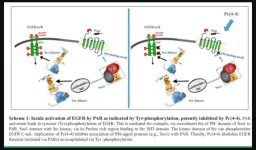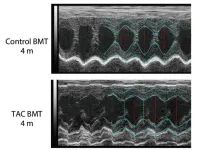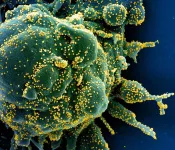PH-binding motifs as a platform for drug design: Lessons from protease-activated receptors (PARs)
2024-05-24
(Press-News.org)
“We have identified binding motifs within the C-tails of PAR1,2&4, indispensable for cancer growth and development.”
BUFFALO, NY- May 24, 2024 – A new editorial paper was published in Oncoscience (Volume 11) on April 25, 2024, entitled, “PH-binding motifs as a platform for drug design: Lessons from protease-activated receptors; PARs.”
While targeted cancer therapy is greatly dependent on specific oncogenic pathways or conferred by genetic alterations, it remains yet challenging and somewhat disappointing. The high level of failure relies on the interplay between the dose for desired therapy versus toxicity, namely the therapeutic index. Furthermore, one should take into consideration resistance response that develops with time to a given drug, contributing immensely to the given drawback.
In this new editorial, researchers Jeetendra Kumar Nag, Amnon Hoffman, Chaim Gilon, Beatrice Uziely, and Rachel Bar-Shavit from Hadassah-Hebrew University Medical Center and The Hebrew University highlight the need for alternative targeting routes.
“Although the contribution of G-protein-coupled receptors (GPCRs) in cancer malignancy is growing, GPCR-based therapies are rare.”
Importantly, GPCRs are involved in many aspects of tumorigenesis, including proliferation, invasion, survival at secondary sites, cancer stemness and cancer associated signaling pathways. Indeed, big data population analyses indicate the significance of GPCRs as valuable targets for therapy in cancer. Protease activated receptors (PARs), a subgroup of GPCRs, form a family of four members; PAR1-4.
“TCGA and GTEx database show that PAR2/F2RL1 is significantly overexpressed in many types of epithelial malignancies among of which are colon [3], breast [4] and ovarian cancers [5].”
Continue reading: DOI: https://doi.org/10.18632/oncoscience.599
Correspondence to: Rachel Bar-Shavit
Email: rachelbar@ekmd.huji.ac.il
Keywords: G-protein coupled receptors (GPCRs), protease-activated receptors (PARs), pleckstrin homology (PH), protease, drug design
About Oncoscience:
Oncoscience is a peer-reviewed, open-access, traditional journal covering the rapidly growing field of cancer research, especially emergent topics not currently covered by other journals. This journal has a special mission: Freeing oncology from publication cost. It is free for the readers and the authors.
To learn more about Oncoscience, visit Oncoscience.us and connect with us on social media:
X, formerly Twitter
Instagram
Facebook
YouTube
LinkedIn
For media inquiries, please contact media@impactjournals.com.
Oncoscience Journal Office
6666 East Quaker Str., Suite 1D
Orchard Park, NY 14127
Phone: 1-800-922-0957, option 4
###
END
ELSE PRESS RELEASES FROM THIS DATE:
2024-05-24
Undergoing surgery is seldom a pleasant experience, and it can sometimes be highly invasive. Surgical procedures have evolved steadily over the centuries, growing with the knowledge of anatomy and biology.
Innovative methods have also been bolstered with new tools, and a growth in the use of robotics since the 1980s has moved health care forward significantly. Assistant Professor Zhenhua Tian has pressed forward another step in the march of progress using robotics and noninvasive acoustics, and his team’s work has been published in Science Advances.
Robot-assisted surgery
Surgery using robots has been invasive since its invention because ...
2024-05-24
LOGAN, UTAH, USA – A long-standing debate among evolutionary scientists goes something like this: Does evolution happen in a predictable pattern or does it depend on chance events and contingency? That is, if you could turn back the clock, as celebrated scientist Stephen Jay Gould (1941-2002) described in his famous metaphor, “Replaying the Tape of Life,” would life on Earth evolve, once again, as something similar to what we know now, or would it look very, very different?
“If you frame it as an either/or question, it’s too simplistic,” says Utah State University evolutionary biologist Zachariah Gompert. “The answer isn’t ‘completely ...
2024-05-24
The stress of heart failure is remembered by the body and appears to lead to recurrent failure, along with other related health issues, according to new research. Researchers have found that heart failure leaves a “stress memory” in the form of changes to the DNA modification of hematopoietic stem cells, which are involved in the production of blood and immune cells called macrophages. These immune cells play an important role in protecting heart health. However, a key signaling pathway (a chain of molecules which ...
2024-05-24
Scientists have pinpointed genetic changes that can leave children born with little to no immune defence against infection.
In a new study of 11 affected individuals, researchers from Newcastle University, the Wellcome Sanger Institute, the Great North Children’s Hospital, and their collaborators were able to link mutations in the NUDCD3 gene to Severe Combined Immunodeficiency and Omenn syndrome1 – rare and life-threatening immunodeficiency disorders. These mutations prevented the normal development of diverse immune cells needed to combat different pathogens2.
The findings, published today (24 May) in Science Immunology, ...
2024-05-24
LAWRENCE — Using data from the Transiting Exoplanet Survey Satellite and W.M. Keck Observatory on Mauna Kea in Hawaii, an astronomer at the University of Kansas led a study appearing today revealing 15 new exoplanets — planets beyond our solar system — along with the mass of 126 other exoplanets. The findings give astronomers new understanding of the makeup of exoplanets and their star systems generally.
The study cataloging the exoplanets — comprising severe and exceptional environments, some of which hold promise to support life — was conducted under auspices of the TESS-Keck Survey and appears ...
2024-05-24
WHAT:
Mice administered raw milk samples from dairy cows infected with H5N1 influenza experienced high virus levels in their respiratory organs and lower virus levels in other vital organs, according to findings published in the New England Journal of Medicine. The results suggest that consumption of raw milk by animals poses a risk for H5N1 infection and raises questions about its potential risk in humans.
Since 2003, H5N1 influenza viruses have circulated in 23 countries, primarily affecting wild birds and poultry with about 900 human cases, primarily among people who have had close contact with infected birds. In ...
2024-05-24
Researchers at the U of A found self-identified small business owners on TikTok are circumventing a number of local, state and federal laws that restrict the individual sale of tobacco products. Specifically, the researchers found that 45% of the videos highlighted the fact that they did not require identification to verify the purchaser’s age.
“Many states have laws that govern procedures necessary to sell e-cigarettes,” explained lead researcher Page Dobbs, an associate professor of public health in the Department of Health, Human Performance and Recreation ...
2024-05-24
Leading African scientists have issued a compelling call for more equitable research partnerships in a new paper published in Nature Medicine. The paper underscores the critical need for fair and collaborative research efforts to explore the unique and diverse microbiomes found in African populations and environments. Historically, these microbiomes have been underrepresented in global studies.
Over the past two decades, our understanding of the role played by the microbiome in different ecosystems has significantly expanded. For ...
2024-05-24
LA JOLLA, CA—New research from scientists at La Jolla Institute for Immunology (LJI) suggests people who received COVID-19 vaccines and then experienced "breakthrough" infections are especially well armed against future SARS-CoV-2 infections.
By analyzing blood samples from study volunteers, the LJI researchers discovered that people who experienced symptomatic breakthrough infections develop T cells that are better at recognizing and targeting SARS-CoV-2, including the Omicron and Delta variants. The researchers describe this increased protection as an "immunity wall."
"The virus evolves, but, importantly, so does the immune system. T cells ...
2024-05-24
May 24, 2024 --
A team of international scientists, including Virginia Tech entomologist Warren Booth, have solved the 250-year-old origin puzzle of the most prevalent indoor urban pest insect on the planet: the German cockroach.
The team's research findings, representing the genomic analyses of over 280 specimens from 17 countries and six continents, show that this species evolved some 2,100 years ago from an outside species in Asia and were released this week in the Proceedings of the National Academy of Sciences journal.
One ...
LAST 30 PRESS RELEASES:
[Press-News.org] PH-binding motifs as a platform for drug design: Lessons from protease-activated receptors (PARs)










